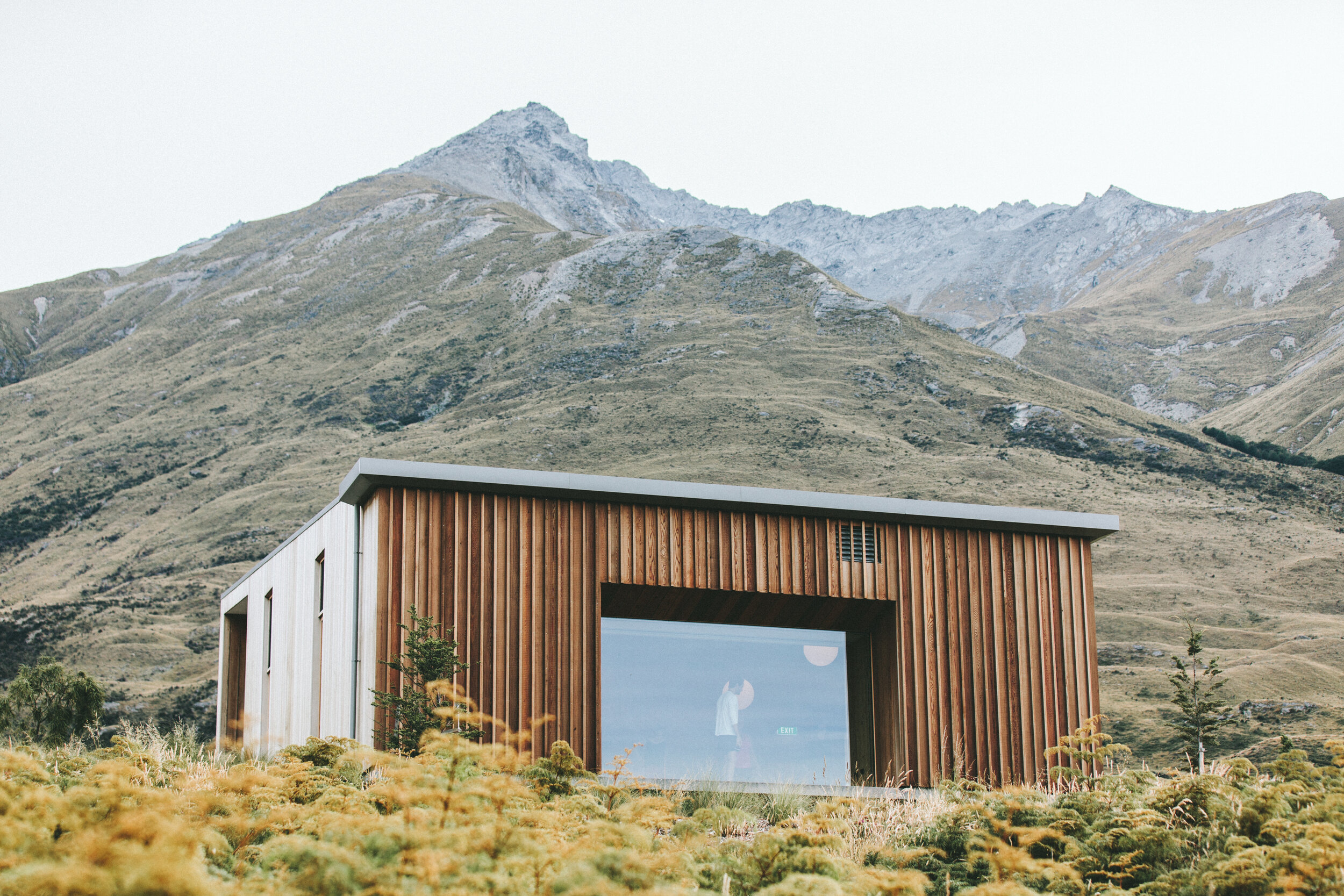Managed Retreat in Coastal Communities
While attempts to mitigate erosion are being made, they do not address the changes in storms and sea level rise which act as climate risk amplifiers. The community of Tuktoyaktuk has a limited amount of time to decide on an adaptation strategy to preserve their community, which may require relocating to another location.
There is a lot that can be learned from communities who have experienced managed retreat as a result of environmental hazards. Below are a few case studies of Indigenous coastal communities that have begun the relocation process. These case studies be used to inform the potential steps to be taken and stakeholders to be involved at different stages of the strategy development.
To date many of the communities have been unsuccessful in realizing their relocation vision as planned. However, a lot can be learned about these communities success in reaching community consensus on the decision to relocate, engaging community perspectives, receiving funding and initiating discussions across scales of government.
Case study summaries. See detailed case studies below.
Challenges
Each of the communities introduced as case studies in this report was faced with challenges throughout the relocation and community development process. These challenges can be summarized as:
Lack of commitment to funding the development of a new community. While the relocation master planning exercise has been successful in many of the communities, the implementation of the designs has been stalled by limited access to funds. In both the US and Canada, there is no formal government agency responsible for the building of new communities in response to climate change and environmental relocation.
Inconsistent political priorities. The political party in power, particularly at the federal level, influences the commitments made to relocate communities. Relocation projects are based on longer timelines, 10 -25 years, and require consistent support from the government. Transitions in the political landscape can stall the progress of relocation development and lead to loss of faith in the government.
Addressing social impacts related to environmental change. While each of the case studies was in the relocation process, new social problems emerged as a result of environmental change. These impacts affected fuel delivery, public health and safety, disruptions to cultural and subsistence activities and fragmentation of community.
Limited investment in infrastructure once relocation has been decided upon. In some communities, after deciding to relocate, there were no further investments in existing community infrastructure. This has exacerbated hazards for communities while they wait to relocate to a new site.
Acquiring land. The act of acquiring land can take a significant amount of time to acquire or transfer once a suitable site has been selected.
Reaching consensus on the decision to relocate. The decision to relocate is difficult and requires meaningful engagement with community members to ensure that the current and projected risks are understood; to explore the values and priorities of the community, and to promote ownership of the project.
Best Practices
An analysis of the case studies presented in this report suggests that there are strategies and practices that have benefited the relocation process. These include:
Meaningful community engagement from the outset. It is clear that residents need to be involved in every phase of the decision-making process, beginning with the site selection. Receiving and integrating feedback and input from residents into the final design can help to ensure that the priorities and needs of the community are being met to create safe and resilient places where people want to relocate. (See Appendix A, C, E, G)
Collaboration among levels of government and governments. Consistent communication across governments is necessary to support a unified goal and understanding of the needs of the project at different scales. Communication between agencies can help to focus the efforts, delegate responsibilities appropriately and create accountability.
Recognizing vulnerability of communities beyond the physical exposure to hazards. In all the case studies, there were social and cultural impacts of the environmental hazards as well as the planned relocation. Acknowledging these impacts and identifying ways to mitigate them is an integral part of the relocation process.
Potential Next Steps
Informed by the case studies introduced in this report, the next steps include:
Accessible communication to residents of the current and future risks in Tuktoyaktuk. The projected risks of remaining in place need to be clearly communicated to residents. This will require that scientific data be communicated in ways that can be easily understood by community members and that there are opportunities to ask questions. In addition, alternative adaptation and mitigation strategies, outside of relocation, should be introduced and discussed, in order to outline the reasons they are or are not viable.
Create a vision. The community should come together to identify a vision for the future. The potential to think about the future is often challenged by the current priorities of individuals and households. It will be important to address the current concerns of individuals prior to this meeting, which can be incorporated into the discussion on current and future risks in the community. It will be helpful to engage youth and elders in the development of the community vision.
Engage partners and create committees. The relocation process will require diverse sets of expertise. To avoid fatigue and maintain momentum, identify partners with skill sets needed for the process. In addition, focused committees should be created and individuals from the community with particular expertise invited to participate. It is important to identify and engage individuals who can represent the interests of the community in different areas of discussion.
Community-engaged site selection. There are currently two sites that have been identified as potential sites for relocation, though recent 3m flood maps suggest that one of these sites may not be suitable. Residents need an opportunity to provide input into the site selection process. They should be asked to provide ‘pros and cons’ of the selected sites and encouraged to provide alternative sites, and/or criteria that should be met in order to be considered suitable.
Select a design team. Once the site has been selected the community will identify a professional design team to collaboratively develop the master plan of the new community. It will be important to look for designers who have a good understanding of the region and the social and cultural impacts of relocation, has a practice based on community engagement and has the capacity to develop a phased approach. It would be best if the design team had an interest in engaging youth in the design process as they will be the future residents of the new community.
Secure funding. It is important that funding is secured prior to the relocation master plan process. If funding is not secured, the exercise can create unnecessary conflict within the community as well as diminish faith in government and involved agencies.
Case Studies
-

Newtok, Alaska
The village of Newtok is eroding in part because its sits on permafrost that is melting, leading to rapid erosion and as a result of erosion from flooding of the Ninglick River. Snow is melting earlier in the spring, sea ice is disappearing and the ocean temperature is increasing.
The timelines, resources and documentation recorded through Newtok’s relocation process provide examples to guide the relocation process framework for Tuktoyaktuk.
-

Isle de Jean Charles, Louisiana
The residents of IDJC struggle with stronger storms, more frequent and damaging floods, the loss of wetlands and wildlife around the island, and damage to their homes. Many former residents have left the island over the past half century, largely due to hurricane or flood damage and impeded access to work and school due to regular flooding on the island road. The island has lost 98% of its land to erosion; 320 acres of the original 22,000 acres remain above sea level.
The Resettlement of IDJC has taken a phased approach.
-

Quinault Indian Nation
Queets and Taholah are two communities in the QIN that are addressing the need to relocate. Both communities are threatened by flooding and storm surge. Their location on the Cascadia Subduction Zone exposes the communities to the risk of earthquakes and tsunamis which could result in the total loss of the lower parts of the villages. The isolated communities are likely the last places to be reached and served by relief efforts after a disaster.
Both of the QIN relocation projects used community engaged frameworks and have documented their processes to inform future relocation planning in other communities faced with environmental hazards.
-

Aklavik, Northwest Territories
Known as the ‘town that wouldn’t die’, the relocation of Aklavik to Inuvik was prompted by its location on low, unstable ground in the Mackenzie River Delta. Though the community continues to experience the severe flooding and erosion that prompted relocation, a number of residents refuse to leave their homes.
The decision to relocate the town was made with limited input. There is much to be learned about what didn’t work in this case study.
-

Kashechewan, Ontario
The First Nation community of Kashechewan was first evacuated in 1976 as a result of flooding. The community has been evacuated every year since 2012, during which time homes have been demolished due to recurring flooding. The federal government has been promising to relocate Kashechewan for more than 15 years and have signed three agreements with the First Nation to relocate the community, though no actions have been taken.
The process has started and stopped numerous times, leading to distrust in the government, rallies against the slow progress and a feeling of hopelessness.
Additional Managed Retreat Reports
-
Planned retreat approaches to support resilience to climate change in Canada
Natural Resources Canada
-
Out of harm's way: A scan of emerging global practices in climate change displacement for Canadian policymakers and practitioners
University of British Columbia’s Sustainability Scholars Report
Climate Displacement Planning Initiative
-
Rights, resilience and community-led relocation: Creating a national governance framework
Robin Bronen
